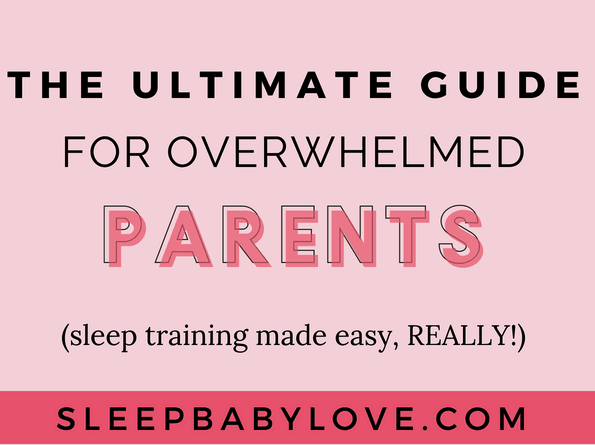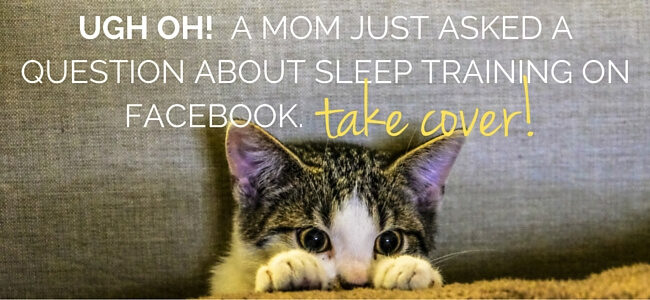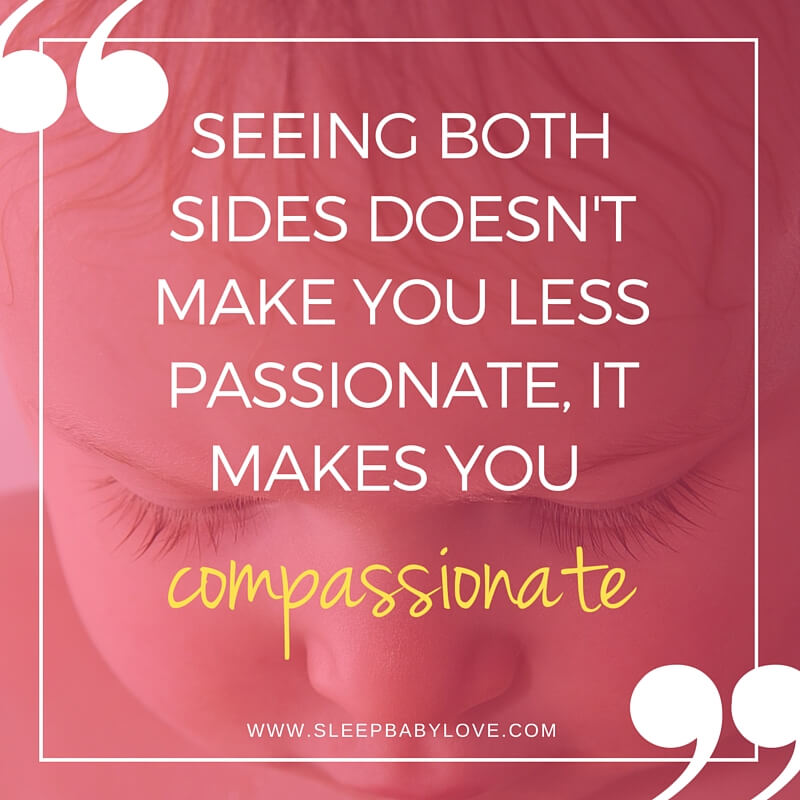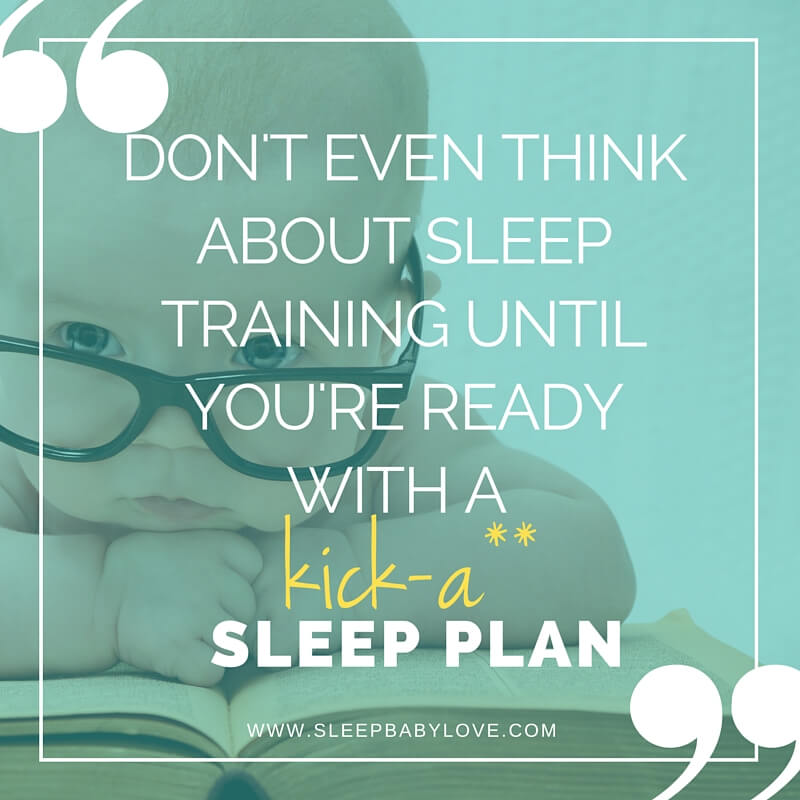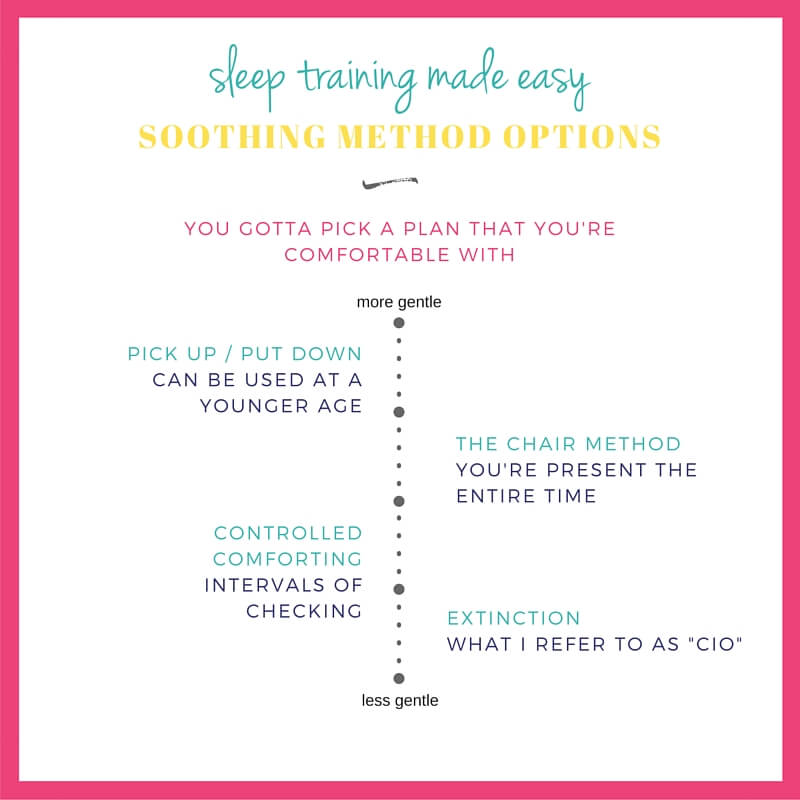Baby Sleep Training: How To & Methods – The Ultimate Guide for Parents
Baby sleep training is taboo.
(I get it…)
It’s a word that not everyone wants to talk about. Some people think it’s sacrilegious, scary, and downright awful. And, don’t even think about bringing up baby sleep training in a mom’s group. That’s when all the girl fighting begins.
Baby sleep training methods are something that no one wants to talk about because no one really wants to do it. We all want to have the baby that sleeps blissfully on day one. The baby that coos and gurgles happily.
That baby who can fall asleep independently, and wakes up happy.
No one dreams of becoming a sleep-deprived hot-mess dressed in puked on pajamas. None of us longs for reflux, blow out diapers and babies that cry (a lot)!
That sure as hell wasn’t the vision when dreaming of the blissful family.
For many parents, the nightmare has become a reality. Since the 4 Month Sleep Regression, your baby all of a sudden doesn’t sleep so hot.
They know they need to make a change. That carrying on with such little sleep and so many wake-ups aren’t good for anyone.
So when you have a baby that won’t sleep longer than 1.5 hours.. Or won’t nap longer than 20 minutes… And you’re hanging on by just a thread…
It is important to understand what baby sleep training is.
The purpose of this blog post is to provide support and knowledge for the sleep-deprived parents that might not know what day of the week it is.
(Please, please, please – if you do not agree with sleep training – this article isn’t for you. Don’t tell me that I’m horrible. Please don’t tell others that they are awful too. The greatest thing about the internet is the back button. Please no hating on me!)
What is baby sleep training?
I asked a group of moms what baby sleep training meant to them, and their definitions were pretty varied:
…Trying to “train” your baby to adhere to a sleep schedule like yours.
…Ferber Method
…Following a set protocol to get your child to sleep more- usually C.I.O.
…Working on teaching your child the times to sleep.
Some call it sleep coaching; some call it sleep shaping, sleep supporting, but I just call it baby sleep training. Why? To me, it’s just a recognizable word and means exactly what it says.
My definition of sleep training is giving your child the tools to fall asleep independently, while making each variable as optimal as possible.
The soothing component (how you are going to teach your baby these skills) is the most significant component of a sleep training plan. Equally as important is making sure your baby is well-rested, focusing on age-appropriate nap and bedtimes, and sleeping in an environment conducive to sleep.
You could also say that baby sleep training methods are, simply put, training your baby to sleep. OK, that works too. Keep in mind..
… It’s not just about letting your baby cry to sleep.
… Baby sleep training is not about letting your baby get rid of all their feeds in the middle of the night (since I don’t usually do that).
… It’s not just about your baby falling asleep alone at bedtime.
… Last but not least, it’s definitely not about getting your baby to fall asleep at the times that are best for you.
There are many different approaches and philosophies behind sleep training for babies but as long as you are focusing on independent sleep skills and optimizing the other variables of sleep, you are on the right track.
When sleep training is done correctly, results can be seen immediately. Not to mention that having a baby sleep well can be life-changing.
Why does baby sleep training get such a bad reputation?
We live in the day and age of a lot of electronic information, and it’s both a blessing and a curse. I know since I was that sleep-deprived mama. For the first few months of my second daughter’s life, I was holding her with one hand trying to get her to sleep while my second hand was googling everything about sleep that I could.
The good: There is a vast amount of information online.
The bad: There is a vast amount of information that contradicts all the information that you just read.
==>>That contradictory information makes many parents’ heads spin.
The good: You can find support through the internet. When my baby was going through those fun sleep issues, I stumbled upon a group of crazed sleep mamas, and 3+ years later, I’m still connected with these ladies (and most of us are still obsessed with sleep).
The bad: Mom-shaming is such a thing… write the wrong thing in the wrong group, and the results are not pretty. Moms who would never even think to be rude when you say hi to them at a Target picking up diapers have no problems letting out their disgust for your dissenting opinions due to the anonymity of the internet.
==>> Don’t go into a gunfight without a gun. Don’t ask for sleep training advice on Facebook.
So why does sleep training have such a bad rap? It’s because haters are going to hate, hate, hate (thanks Taylor), and if you feel strongly about something, you are going to find a way to defend it. Plus, not everyone can feel comfortable about something that is so personal.
There’s a lot of information out there that essentially says you’re really going to screw up your kid if you even think about sleep training.
Since you can read it on the internet, it must be true. So people are holding that information as gospel. And that’s OK.
For those that are curious why people are so against baby sleep training, it’s because there are (many) articles that show that training your baby to sleep causes attachment issues and increases stress to your baby.
Here are a couple of articles against baby sleep training methods (read cautiously):
Ten Reasons to Not Sleep Train Your Baby
I don’t want to discount what anyone feels, but these articles just don’t pass the sniff test for me.
A baby is provided love and attachment outside of sleep training. A baby is provided with love and attachment since they are part of a loving family unit. The love in parenting outweighs the short term effects of sleep training.
And, of course, I am providing my perspective of the hundreds of clients that I’ve helped that have had life-changing results (who had such a hard time before they are called me).
Here are the articles supporting baby sleep training:
Science Confirms Any Way You Want to Sleep Train Is Fine
Sleep Training Your Baby Is OK
There are some excellent studies that show that for a sleep-trained sample (like this one), over a 5 year follow up, that there were no differences between the sleep-trained babies and the ones who were not.
A more recent Australian study showed that in a group of 43 sampled, the “sleep trained” group could fall asleep faster and had no stress, attachment, or behavioral issues compared to the control group.
Also, our babies will all grow up, and we will laugh when giving a speech at their wedding just how bad of a sleeper he was.
I’m not trying to change anyone’s mind about the way they should view baby sleep training – I’m just trying to take the shame away from the topic.
‘Cause can’t we moms get along?
When is the right time to sleep train your baby?
There is no magical time to sleep train. I say that sleep training is when you are ready (or at least > 4 months adjusted age). I get that there is a lot of discussion among professionals on the exact time that sleep training is best.
…There are many that say not before 4 months,
…Many say not before 6 months.
…Hey, there are even those people that say 2 months (I don’t recommend this approach).
I always suggest talking to your baby’s pediatrician and get their thoughts.
- Always remember, go by adjusted due date vs. actual due date (if your baby was born eight weeks early, make sure to subtract eight weeks to their age). If your baby was born around the 38-week mark, you don’t need to adjust further as long as developmentally they are on track.
- For reflux babies, make sure that the reflux is being managed or under control first.
- Get your pediatrician’s A.O.K. for growth and development.
I sleep trained my baby at four months, and I had a successful story (once my baby learned how to fall asleep independently and sleep in the crib – things came together quite nicely.) I was getting rid of a Rock N’ Play addiction, ditching the pacifier, and removing the swaddle all at once.
It wasn’t at all the scary taking hours upon hours to fall asleep. Other than the first two nights – it went pretty well after that.
So it’s hard for me to tell people that when things are really tough – to wait longer than four months, since that’s what I did.
If you’re comfortable holding on until six months…more power to you. You won’t hear me complain.
Is there an “easy” age to sleep train?
In my hundreds of cases where I worked as a sleep consultant, there is no trend for a super easy age to sleep train—just the truth.
4-5 months are sometimes tough since the baby battles with short naps and still has feedings during the night. But yet, I’ve worked with many babies around this age who did amazing!
6-7 months sometimes can be tricky since you’re so close to the 3-2 nap transition. But again, there are always the ones that do great!
I’ve had a lot of great success baby sleep training the eight months + range, especially when they are ready to drop feedings.
The most significant component is doing it when you are ready…. like really prepared. If you’re not prepared, don’t do it!
What if my 2, 3, or 4 or even 5 year old doesn’t sleep?
Have no fear – sleep is going to always go from good, to not so good to good again. Sometimes, even the best sleepers get off and forget all of their awesome sleep skills.
Many parents just go with the approach that their child will just grow out of their issues or figure it out one day. But, that’s when many parents regret not sleep training their child.
Yes, you can still sleep train an older child, but it’s not exactly the same as what works with babies (0-18 months). I use a different set of techniques when working with toddlers or preschoolers since behavioral changes are required. Plus, your child can understand you, so communication becomes a big part of the sleep plan. (Click here to get FREE access to my Preschooler Sleep Made Sleep Workshop).
But are you ready?
Feel free to do a reality check.
Parenting styles go in ebbs and flows… Believe it or not, not all that long ago, parents let their baby cry to sleep the minute they came from the hospital (I don’t recommend this approach). But, guess what, those people are really fabulous, caring, responsible adults. They weren’t ruined because their parents let them cry.
Ask your parents. Were you let to cry? Chances are you or someone you know was and you turned out OK (at least I think so).
My perspective: I had two girls: one sleep trained – one not.
I give a unique perspective since I have two girls. My youngest is the reason I am a sleep consultant. I did not sleep train my oldest daughter, and she was never a good sleeper. I struggled for years with my oldest daughter, and still, to this day, I have to focus on sleep.
My oldest daughter was addicted to a pacifier, always took short naps and when I made the awful mistake of converting from a crib wayyyyyy too early, she went to bed waaaaayyyyy too late and woke up waaaaaayyyyyy too early. She was an overtired hot mess.
Shoulda, woulda, coulda, but if only I nipped our sleep issues in the bud at 4 months, 6 months, or 12 months? Maybe our lives would have been a little easier?
Who knows?
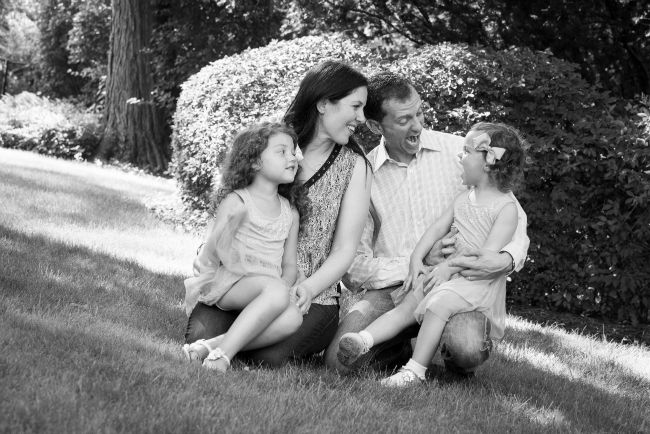
But, I will say that both my girls have strong wills. That’s a personality. It has nothing to do with sleep training.
OK, So You’re Ready for the how to of baby sleep training… now what?
The worst thing I see is someone in their exhausted state decides, “this is the night, we’re hunkering down. We’re just leaving our baby to cry.”
Boy, that is so the wrong way to do it…. so please don’t. OK?
Why, you ask?
Sleep training needs a plan. A really good plan. It needs thought. It needs preparation. Your head needs to be in the game before you start anything…
baby Sleep training is not…
- just about leaving your baby to cry.
- only about getting rid of all night feeds.
- just about seeing if you can survive one night of hell.
I see way too many people who say – let’s do it. And then when the going gets tough… they stop.
My thought: What was the point of starting when you clearly weren’t ready? Now, this is when working with a sleep consultant like me is so helpful. We create the plan based on your situation (to help you take the guesswork away).
Here are the many questions that you need to answer before you even think about making your first baby sleep training attempt.
- Are you ready to make a change?
- Have you come up with a good plan?
- What soothing method are you going to use?
- Are you going to keep a pacifier?
- Where will your baby sleep for nights and naps?
- What changes are you going to make to your baby’s room to create the optimal sleep environment?
- What will your bedtime routine look like?
- How many night feeds will you have?
- What will your soothing method be for nighttime?
- Is the sleep training method method the same for night wakings, naps and bedtime?
- What time will your day start?
- Will you work on nights and naps at the same time?
- Are your feedings going to be before or after naps?
- Will naps be based on a set time or flexible times from when your baby is up?
- What will you do if your baby takes a short nap?
- Are you ready to be consistent?
Once all these questions are answered in great detail, you’re ready to create your own sleep plan.
What’s the most important component of baby sleep training methods?
To make it easier on you, for many of you reading that are rocking or nursing their baby to sleep, your goal to start sleep training should be one thing. To put your baby down awake and fall asleep independently. Yeah sure – you would like your child to stay asleep too but let’s focus on baby steps.
In fact, that’s what I make sure that every client I work with is prepared for.
Celebrate the little victories!
Your baby falls asleep (let’s celebrate)
Your baby stays asleep (let’s celebrate).
Everything else comes together in due time and for some of you – just teaching independent sleep skills is enough to have everything else come together quickly too.
Night wakings, night feedings, early wake-ups and short naps can sometimes be fixed by just teaching independent skills.
But for other babies, it’s not so easy. But once you have the independent skills – you have something to build upon.
how to create a baby sleep training plan
Now that you’ve given some thoughts to the questions above, I can help you dig a little further to help create your own sleep plan.
Sleeping Environment
Your baby should be sleeping in an environment conducive to sleep (you paid all that money for the crib, so go ahead and let your baby sleep there!).
Also think about cool (68-72 degrees), dark (yep, really dark – with blackout shades ===>>these are the best blackout shades made in the U.S.A.) and quiet with a white machine on (one that won’t turn off).
Bedtime Routine
I always suggest starting your sleep plan at night. The sleep drive is higher at night and it’s typically easier to get your baby to fall asleep since naps are so hard.
A consistent bedtime routine is a strong cue for sleep. Think of the 3 Ss when creating the perfect routine for your baby. Short, Sweet (or you can think of special) and See Ya. A couple books, a short and sweet song, and a sweet kiss and loving phrase will create the perfect routine that you and your baby can enjoy for years to come.
The key is to put your baby to sleep awake. One easy way to do this is to move nursing or the last bottle to the front of your routine (and by 9 months, I completely remove the last feeding completely from your bedtime routine) since we want to change the sleep/food association that is so strong.
So here’s the key: You put your baby in his crib awake.
For little babies – you focus on drowsy but awake. After 6 months, you need to make sure your baby is really “ready but awake” which will allow your baby to do all the work to get from a sleepy to sleeping state all by himself.
OK, Your Baby Is Placed in the Crib Awake Now What?
The first step is to walk out of your baby’s room confidently. A study of 70 parents found that a baby can pick up on mom’s stress – so hold it together and put on a brave face.
So what’s next is the hardest part of the plan. Once you are outside of your baby’s room, your baby isn’t just going to say “thanks, mom and dad, I’ve been really wanting to fall asleep on my own.” Nope. That would be too easy.
Your baby will be pissed. Your baby doesn’t know how to fall asleep. This is new for her and she doesn’t like it.
Now since you’ve done your pre-work, you aren’t going to take these cries personally.
… you’re not torturing her
…she just doesn’t yet know how to fall asleep and that’s what you are going to teach her.
What baby sleep training method should I use?
There are several different sleep training methods that you can use to help teach your baby fall asleep by themselves.
The method you pick is also known as the “soothing method” and is mainly decided based on what you’re most comfortable with and your family philosophy. The methods vary from cry-it-out sleep training to no-tears methods (but sorry, folks – all the methods below, maintain some level of crying since this is new for your baby).
Of course, this list I’m sharing below isn’t the only way to sleep train your baby. These are just some of the more popular methods I recommend.
Pick Up / Put Down: To me, considered the gentlest of methods. It can be used in combination with a “no-cry” solution or you can wait a period of time between intervals. Essentially, you are picking your baby up. Calming (hopefully) and then putting your baby back down to give him the opportunity to fall asleep by himself.
The Chair Method: This is considered another “gentler” method. Although this one doesn’t necessarily get your baby to not cry, it can help you be with your baby the entire time they are learning to fall asleep independently (also known as fading). Your presence “through sitting in the chair”, moves away from your baby as she learns to fall asleep independently. This is an approach I recommend for an older baby (around 12 months) through preschooler, but it can often be difficult when used with a younger baby.
Controlled Comforting: This method is also known as the Ferber method (thank you Dr. Ferber and his book). Over set intervals of time, you go back in and comfort your baby. I suggest that you can shush, pat, touch and use comforting words. But you do it for only 1 minute and your goal is not to calm your baby down. Your goal is to reassure your baby (and yourself).
Extinction: This is what I consider as “cry-it-out”. You choose not to respond to your child when they are learning this important skill.
Once things are great does that mean I’m out of the woods?
Even the best sleepers are prone to get off track once in a while. There are always sleep regressions, teething, vacations, daylight saving time, and sickness that can cause little things to go from good to suck, pretty quickly.
But, once your child has independent skills, things should rebound pretty quickly. For the unlucky families, you may have to re-train down the road. But many parents usually don’t have to, since they have great sleepers for the future.
Your Turn:
Sleep training methods may never be in your future. But if they are, the goal of this article is to help you figure out a solid plan. (So you do it right the first time.)
Don’t think that you have to go it alone. If you need additional help you can have me help (heck, I can even create the plan for you). Once your baby becomes a champion sleeper, you may think it was the best (worst) thing that you’ve ever done for your family.

